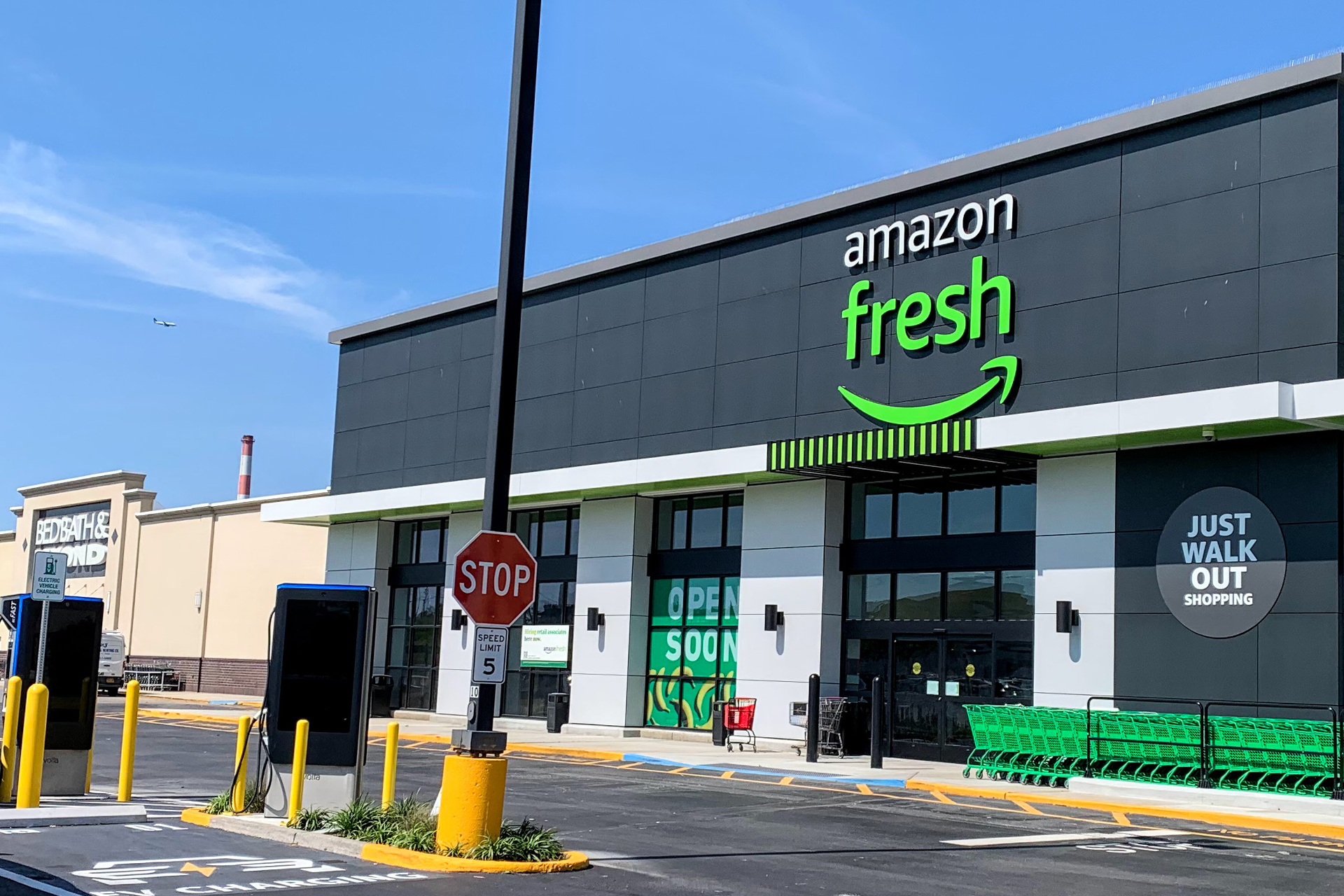In a fourth quarter when sales events prompted strong response, Amazon missed Wall Street earnings estimates while exceeding those for revenues, revealing in a conference call associated with its financial results announcement that it is reconsidering the Amazon Fresh supermarket format and continuing to make adjustments to a fulfillment network that it expanded rapidly leading up to and through the COVID-19 pandemic.
Net income decreased to $300 million, or three cents per diluted share, versus $14.3 billion, or $1.39 per diluted share, in fourth quarter 2021, the company stated.
A MarketBeat-published analyst consensus estimate called for earnings of 15 cents per share and sales of $145.72 billion for the period.
Fourth quarter 2022 net income includes a pre-tax valuation loss of $2.3 billion included in non-operating income expense from the common stock investment in Rivian Automotive compared to a pre-tax valuation gain of $11.8 billion from the investment in the 2021 fourth quarter.
Net sales increased 9% to $149.2 billion in the quarter year over year. With the $5 billion unfavorable impact from year-over-year changes in foreign exchange rates throughout the quarter excluded, net sales increased 12% versus the year-prior period. Net product sales were $70.53 billion, down from $71.42 billion in the 2021 period.
North America segment sales increased 13% year-over-year in the quarter to $93.36 billion, or 14% excluding changes in foreign exchange rates. International segment sales slipped 8% year-over-year in the period to $34.46 billion but increased 5% when changes in foreign exchange rates were excluded. In the business services AWS segment quarterly sales increased 20% year-over-year to $21.38 billion.
Operating income decreased to $2.74 billion in the quarter versus $3.46 billion in the year-earlier period. Fourth quarter 2022 operating income included $2.7 billion in charges for changing estimates related to self-insurance liabilities, impairments of property and equipment and operating leases, and estimated severance costs. The charges affected the North America segment primarily.
North America segment operating loss was $240 million as compared to an operating loss of $206 million in the year-before quarter. International segment operating loss was $2.23 billion versus an operating loss of $1.63 billion in 2021 quarter. AWS segment operating income was $5.21 billion versus $5.29 billion in the year-previous period, Amazon reported.
For the full fiscal year, net loss was $2.72 billion, or 27 cents per diluted share, compared with net income of $33.36 billion, or $3.24 per diluted share, in fiscal 2021, the company pointed out. The net loss includes a pre-tax valuation loss of $12.7 billion included in non-operating income expense from the common stock investment in Rivian Automotive, compared to a pre-tax valuation gain of $11.8 billion from the investment in 2021.
Net sales increased to $514 billion versus $469.82 billion in the fiscal year prior. With the $15.5 billion unfavorable impact from year-over-year changes in foreign exchange rates excluded, net sales increased by 13% compared with 2021. Net product sales were up to $242.9 billion from $241.79 billion in fiscal 2021.
North America segment sales gained 13% year-over-year to $315.88 billion. International segment sales slipped 8% year over year to $118 billion or increased 4% excluding changes in foreign exchange rates. AWS segment sales increased 29% year over year to $80.1 billion.
Operating income decreased to $12.25 billion in 2022, compared with $24.88 billion in the year earlier. North America segment operating loss was $2.85 billion, compared with operating income of $7.27 billion in fiscal 2021. International segment operating loss was $7.75 billion, compared with operating loss of $924 million in fiscal 2021. AWS segment operating income was $22.84 billion versus $18.53 billion in the year previous, according to Amazon.
In a conference call, Andy Jassy, Amazon CEO, said the company continues to experiment with bricks and mortar formats and test different approaches to grocery including its Amazon Fresh concept. At the moment, Amazon is holding further expansion of the format until it has an equation that provides satisfactory differentiation and economic value, which it hopes to work out in 2023, Jassy said.
The company already has registered lease impairments associated with some Fresh and Amazon Go stores, said Brian Olsavsky, Amazon CFO, in the call.
In addition, Jassy noted that, in North America, the company would continue a rationalization effort as regards its fulfillment network, in part to improve the cost structure of a business element that had lately grown rapidly. At the same time, he added, Amazon will continue to push speed of delivery to customers.
Olsavsky, Amazon CFO, pointed out that sales events leading into and through the main holiday season, including Amazon’s first-ever Prime Early Access Sale in October and the Thanksgiving to Cyber Monday 2022 holiday weekend, outperformed company expectations as customers responded to millions of deals across a growing product selection provided by the company and its third-party marketplace partners. In the fourth quarter, marketplace sellers comprised a record 59% of overall unit sales, he said.
In announcing the financial results, Jassy said, “Our relentless focus on providing the broadest selection, exceptional value, and fast delivery drove customer demand in our stores business during the fourth quarter that exceeded our expectations, and we’re appreciative of all our customers who turned to Amazon this past holiday season. We’re also encouraged by the continued progress we’re making in reducing our cost to serve in the operations part of our stores business. In the short term, we face an uncertain economy, but we remain quite optimistic about the long-term opportunities for Amazon. The vast majority of total market segment share in both Global Retail and IT still reside in physical stores and on-premises data centers, and as this equation steadily flips, we believe our leading customer experiences in these areas along with the results of our continued hard work and invention to improve every day, will lead to significant growth in the coming years. When you also factor in our investments and innovation in several other broad customer experiences, for example streaming entertainment, customer-first healthcare, broadband satellite connectivity for more communities globally, there’s additional reason to feel optimistic about what the future holds.”





